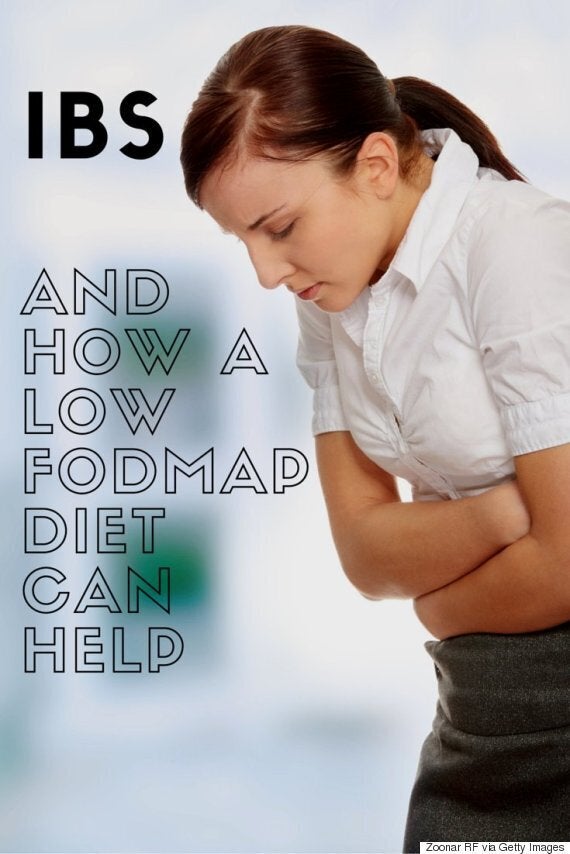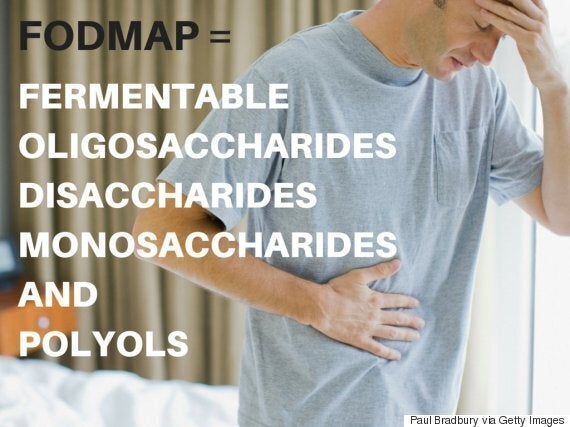
If you experience bloating, stomach cramps, wind and diarrhoea on a regular basis, you may be suffering from irritable bowel syndrome.
"IBS is characterised by a mix of things like bloating, wind, stomach cramps, nausea, diarrhoea, constipation and other gastrointestinal issues," accredited practising dietician Chloe McLeod told The Huffington Post Australia.
"What happens with IBS is that, in some people, there are compounds in different foods that don't break down properly or are poorly absorbed, which that can result in these symptoms."
As you can imagine, IBS can have a significant physical and psychological impact on a person's day to day life.
"One of the most common things that people say is that by the end of the day they look like they're six months pregnant," McLeod said. "It can have such a horrible, negative impact on people's quality of life -- people might urgently have to go to the bathroom and nearly have accidents."
Unfortunately, there is currently no cure for IBS and no one knows the cause.
"It's all about managing the symptoms," McLeod said.
"There is no one definite cause, though there are many theories -- for some people they might have had gastro or a stomach bug and then, as a result, developed IBS," McLeod said.
"For some people, they have family members with IBS, so there might be a genetic predisposition, and then for other people they might get it for no real reason."
External factors such as stress may also be a cause.
"IBS seems to be more common in people who are quite anxious or highly stressed," McLeod said.
Thankfully, the low FODMAP diet can dramatically help those suffering from IBS.
FODMAP is an acronym for a group of sugar-related molecules found in common foods and, for people with IBS, they can be poorly absorbed in the intestine.

"These compounds can act as a food source for the bacteria that are in the large intestine, which can then ferment and cause the bloating, diarrhoea and constipation," McLeod said.
The most common FODMAP foods are those we eat on a daily basis -- including onions, garlic, mushrooms, apples, pears, mangos, bread, milk and yogurt.
The main aim of the low FODMAP diet is to remove these foods from the diet and slowly reintroduce them in order to determine which foods are triggering the person's IBS symptoms.
"We remove those foods for usually between two to four weeks, depending on the individual," McLeod said.
"From there, hopefully if the low FODMAP diet is the right thing for the person, then we start to go through a series of food challenges so that we can determine which FODMAPs are the ones that are triggering your symptoms.
"The reason we do this is because it's unlikely that someone is going to react to every type of FODMAP," McLeod said.

For those with IBS, onions may be one of your trigger foods -- stay tuned for great swaps.
Once a person's IBS food triggers have been determined, they are able to make smarter food choices and, overall, have a better understanding of their IBS.
"The low FODMAP diet is not designed to be stuck to strictly in the long term -- it's more of a diagnostic tool so we can work out what the triggers are and then reintroduce more variety back into the diet," McLeod told HuffPost Australia.
How well does the low FODMAP diet really work for those with IBS?
"It would be a rarity for me these days -- and I see people with IBS every single day -- for the low FODMAP diet to not show signs of some form of improvement," McLeod said.
"Some people find near 100 percent improvement in symptoms, some people find 40-50 percent, but most people do see a significant improvement in their symptoms."
"As a result of that, it can have a really positive impact on the person's quality of life," McLeod said.
If you're wondering how you're going to survive without these FODMAP foods, McLeod suggested these great swaps.
Milk
"With milk, there's plenty of lactose free options on the market, including Zymil and Liddells," McLeod said. "Otherwise plant-based milks like soy milk and rice milk are usually okay."
Garlic
"You can actually use garlic infused olive oil so if you use that as an alternative to garlic, you still get the flavour."
Onion
"The top green part of an onion is also pretty safe to use as an alternative," McLeod said.
"Spices are also great for flavour -- so things like turmeric, ginger, pepper, chives and coriander are really wonderful to provide different flavours in food."
"There's also a powder called asafoetida that has a similar flavour to onion," McLeod said.
Fruit
"There's still a big variety of fruits that can be used," McLeod said.
"Some of the low FODMAP fruits include blueberries, raspberries, strawberries, orange, mandarins, pineapple and grapes."
If you're dealing with IBS or would like to learn more about the low FODMAP diet, check out The FODMAP Challenge website.